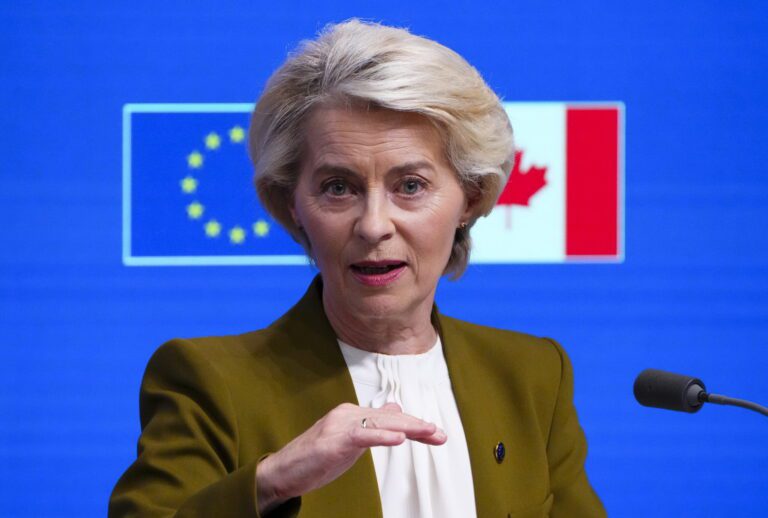EU Trade Negotiations: Tensions with the U.S. and China
European Union (EU) officials convened on Monday to address escalating trade relations with both the United States and China. This crucial meeting comes as the EU holds off on implementing retaliatory tariffs in response to recently proposed tariffs by the Trump administration, which the U.S. now categorizes as a national security matter.
Background on U.S. Trade Tariffs
The U.S., representing the world’s largest economy, is poised to impose a significant 30% tariff hike on European imports starting August 1. This decision has immediate implications for the EU, which consists of 27 member nations.
- Current Status: The EU has decided to delay these countermeasures as negotiations with U.S. officials are still ongoing.
- Statements from Officials: Ursula von der Leyen, President of the European Commission, stated, “This is now the time for negotiations. We have always been clear that we prefer a negotiated solution.” She also highlighted that the EU is preparing countermeasures should talks fail.
The Trump Administration’s Stance
In a letter issued last Friday, President Trump labeled the trade deficit a "major threat" to the U.S. economy and its national security. Kevin Hassett, the Director of the National Economic Council, reinforced this sentiment.
Key Points from Hassett’s Remarks:
- The U.S. aims to "onshore production" to mitigate the trade deficit risk.
- Tariffs are not limited to countries where the U.S. has a trade deficit, as demonstrated by proposals to also target nations like Brazil, a country with which America enjoys a surplus.
Reactions from Brazil and China
Tensions escalated with Brazil’s President Lula criticizing President Trump for linking tariff increases to Brazil’s internal politics regarding former President Jair Bolsonaro. Lula characterized this as "extremely outrageous."
Points of Contention:
- The linkage of tariff policy to political developments in Brazil raised eyebrows internationally.
- China entered the fray, accusing the U.S. of "coercion and bullying" via its tariff policies.
China’s Trade Defense:
- China, itself embroiled in a contentious trade deficit with the U.S., has positioned itself as a major competitor in global markets, notably in the copper sector.
- A significant 28% of Brazil’s exports go to China, highlighting their close trading relationship.
U.S. Copper Import Strategy
The U.S. is heavily reliant on imported copper, mostly sourced from Canada, Chile, and Peru. In recent statements, President Trump declared that imported copper would face a staggering 50% tariff.
Implications for U.S. Manufacturing:
- The U.S. imports over 1 million metric tons of refined copper each year—around half of its consumption.
- Hassett stressed that while building new copper production facilities may take years, tariffs are essential to bolster domestic manufacturing capabilities.
Legislative Support for Tariffs Against Russia
In a related development, Senate lawmakers have indicated they will empower President Trump with measures to impose hefty tariffs—potentially up to 500%—on countries such as China, India, and Brazil.
Purpose:
- This strategy aims to pressure Russia’s President Putin into negotiations concerning the ongoing war in Ukraine.
- Senator Graham has suggested that economic incentives will compel nations supporting Putin to reconsider their alliances.
EU’s Trade Strategy Moving Forward
Despite ongoing tensions with the U.S., Ursula von der Leyen emphasized the importance of diversifying trade relationships for the EU. The trade between the EU and the U.S. amounted to approximately $2 trillion in 2024, primarily driven by sectors such as pharmaceuticals, automotive, and aerospace.
Key Sectors in Trade:
- Pharmaceuticals
- Cars
- Aircraft
- Chemicals
- Medical instruments
- Wine and spirits
Conclusion: Navigating Uncertain Waters
The ongoing trade negotiations underscore a complex landscape marked by shifting alliances and economic strategies. As the EU seeks to balance its relationships with both the U.S. and China, the next steps will be pivotal in shaping future trade dynamics. The increasing intertwining of economics and national security will likely continue to influence tariff policies and global market interactions.
For more information on international trade relations, visit World Trade Organization and European Commission Trade.


